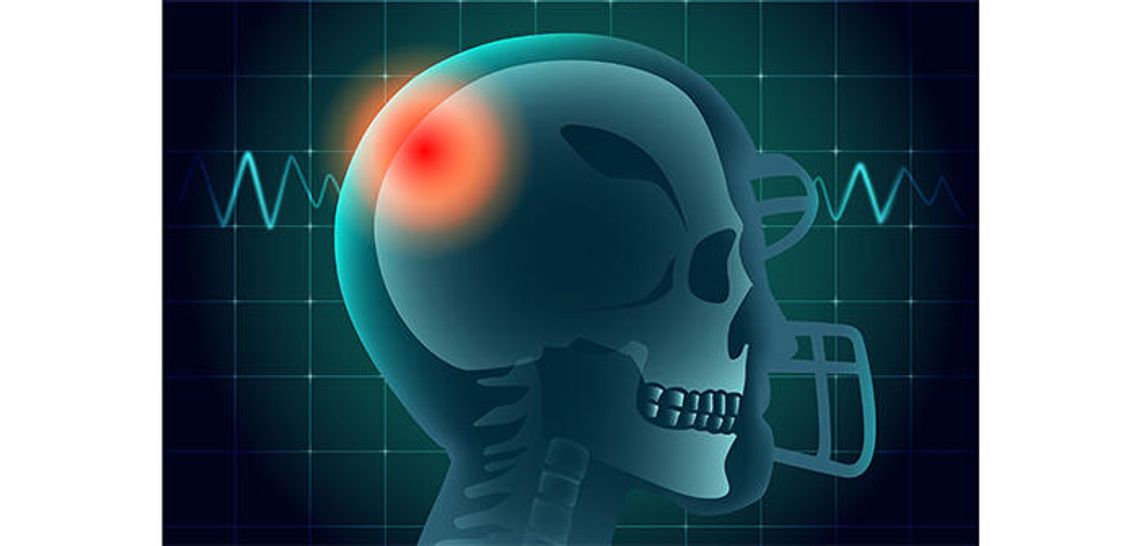[dropcap]O[/dropcap]ver the course of 31 years in athletic training, Mark Winter has witnessed sports evolve with advances in technology and the medical field.
Even as those advances have brought to light the severity of head injuries, such as concussions, Winter believes increased awareness, along with improved equipment and tackling techniques, have helped football become relatively safe.
Much of that belief stems from the evolution of protocols surrounding concussions and head injuries.
When Winter first began his career as an athletic trainer, dizziness after a hard hit was seen as “part of football.”
“As long as you could function, you kept going,” Winter said. It was believed at the time that helmets caused a headache. Dizziness also was seen as a sign of teams delivering a good hit, Winter said.
What is a concussion?
The word concussion comes from Latin and means “to shake violently.” A concussion occurs when an impact of the head or body causes the brain to shift or move inside the skull.
Over time, the mindset of concussions evolved to a degree of severity scale. Previously, concussions were graded from a Level 1, which centered on dizziness or symptoms that lasted for a short period of time, to Level 3, which was given if a player was knocked out.
With more scientific research into concussions and head injuries, people became aware of the long-term effects of concussions.
Today, the National Athletic Training Association (NATA) position statement doesn’t determine concussions as mild or severe. Every concussion is treated as a traumatic brain injury, Winter said.
Additional research shows that sub-concussive events can pile on top of each other and could make a situation worse.
“Research has shown people who have one concussion are three times more likely of getting a second one,” Winter said. “It goes up 10 fold after that.”
How are concussions mitigated?
To combat concussions, every school district in Texas, including Hays, Dripping Springs and Wimberley ISDs, are now required to have a concussion oversight team. Members of that team make recommendations or guidelines for athletes who may have suffered from a concussion.
In the Hays CISD, the oversight team consists of two athletic trainers at Hays and Lehman, along with a general practitioner. School board trustees and those in the athlete community can choose to add others to the team.
On the field, coaches and athletic trainers are the first and primary line of defense for players and their safety.
Winter said at Hays, one of the first things the AT staff does is pull an athlete from competition or practice if they are showing one or more symptoms.
Concussion symptoms can range from headache, dizziness and nausea to impaired vision and unstable balance.
Athletes are evaluated via special tests that determine their cognitive skill. If it’s determined the player shows symptoms of a possible concussion, they are then referred to a physician, who can then diagnose them.
Once diagnosed by a physician, athletes must complete symptom-free a five-step concussion protocol, which must be completed prior to returning to the field.
But one of the challenges is getting athletes to comply with standards to ensure their safety.
Winter said for the most part, athletes are compliant with ATs and will let them know if there is an issue. He added concussions are also fairly self-evident at times.
However, there are some athletes who may hide their symptoms to avoid being pulled from practice or a game. It’s an issue that goes all the way from the high school rank to the professional level.
Sarah Ashworth, Hays High assistant athletic trainer, said students usually work with ATs regarding potential concussion issues.
“Coaches are pretty good at stopping and asking the kids if they are okay,” Ashworth said. “They do a good job of sending the kids to us in order to be assessed.”
How has the game been made safer?
Even as science has determined collision sports, such as football, have higher risks of head injuries, advances in techniques and equipment have also made the game safer.
Changes in tactics on the field is one factor, as football is more pass-oriented than running straight ahead, Winter said.
Tackling techniques have also played a role in making football safer. At one time, football players were taught to drive their facemasks into the chest of an opponent; today players are taught techniques that don’t require use of the head.
Technology has also led to improved safety for players, as helmets are constructed to divert direct force on an athlete’s head. Last year, the Hays High athletic training staff estimated roughly 20 out of the 240-man football roster suffered a concussion in 2016. Only one student suffered a second concussion.
“There is no helmet that’s concussion proof,” Winter said. “They try to make technology better to where subconcussive events can be lessened.”
Ashworth said increased knowledge by all also goes a long way toward making the game safer.
“Increased knowledge from community, parents and coaches to tell the kids when to stop is important,” she said.











